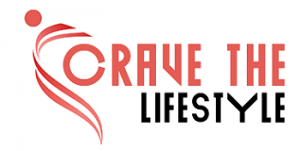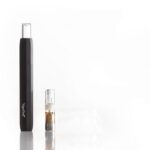The gothic aesthetic is widely used in popular culture these days. Fashion shows, red carpet events, movies, television shows, and music videos are all examples of this. Most individuals have only a rudimentary idea of what this style is. Most people may describe Gothic as a mixture of medieval cathedrals in Western Europe, powerful and warlike northern tribes, and odd young individuals with black lips and metal armor suits.
Modern fashion’s Gothic influence increased tremendously at the same time, absorbing and influencing modern styles.
MODERN GOTHIC CULTURE’S PAST
No matter how long ago it first existed, the Gothic style’s present manifestation can be traced back to the 1970s. Punk music, with its rebellious ethos and catchphrase “live fast, die young,” became extremely popular during this time period.
It was only after a rapid fall that determined deeds gave way to a decadent mindset. A gloomy decadence has taken the place of the riot.
Punks of the 1970s and 1980s influenced the early neo-goths in many ways. Additionally, they sported a variety of metal and leather accents in their attire. However, as time went on, the gothic style developed its own distinct features. The neo-gothic subculture was greatly influenced by Joy Division, a legendary band.
Goths in the modern era are romantics who have lost touch with reality. In the afterlife, vampires, and cemeteries are more of a fascination for them than the present day. Pain and suffering, both mental and physical, teach them about life. In other words, BDSM characteristics are common in the gothic community.
In the early 2000s, the gothic style was introduced to the fashion industry. The gothic look was initially embraced by a well-known designer in Alexander McQueen. His Birds, Hunger, and Shining collections were dubbed “the rebirth of Victorian drama” by fashion critics. There was a lot of black lace, puffy skirts, and ruffled tops in the collections.
Myths and Facts about Gothic Style
One of the most common misunderstandings about gothic fashion is that it has to be all black. It is true that the gothic style favors black, but this does not mean that black is the only color acceptable. The gothic style can be applied to a white clothing, while a black dress with a lot of detail can just be called a black dress. In light of this, it’s critical to understand what makes gothic fashion so appealing. Let’s see if we can figure things out.
OR IN THE FUTURE, THE GOTHIC STYLE CALLS.
The antique gothic style is characterized by long vintage dresses, headgear with feathers, and corsets. That they are inspired by fashion trends from the past is a no-brainer.. However, the masks and goggles, as well as the enormous fabric-soled shoes worn by cyber-Goths, evoke a dystopian future for our planet.
COOL COLORS ARE NOT PERMITTED IN GOTHIC STYLE
Cool and elegant, Gothic fashion is a great choice. With few exceptions, Goths, who consider themselves to be “children of the night,” don’t dress in pastels or flashy hues. In order to avoid the sun’s harmful rays, they avoid sunbathing and favor items made of white metals like silver and white gold. White has long been used as a representation of the moon’s icy light. It’s the best way to bring off their gothic mourning outfits and ghostly skin tones.
The use of stones in gothic jewelry is quite unusual. Perhaps the Goths aren’t a fan of gold because so many of the jewelry are made of it. Gemstones, on the other hand, are not appropriate for gothic apparel because of their hue. There are just two exceptions to this rule: sapphires and diamonds.
That being said, gothic jewelry frequently features semi-precious stones. Topaz, black opal, agate, and jade, as well as other cool-toned black and white jewels, are all welcome. Natural (sea and river pearls) and synthetic (cultured pearls) pearl-adorned accessories will be commonplace, as well.
Among gothic fashion, black is the most preferred hue of color. The color black was used as a sign of mourning for a life of agony and suffering. It is common for Gothic clothing to be fashioned of velvet, satin, and other materials that intensify the dark hues and give them a sense of depth, grandeur, and drama. Lace and other translucent fabrics, as well as leather, are common accents on gothic clothes.
THE ROMANTIC AND INDIVIDUAL STYLE OF GOTHIC STYLE
For those who love the gothic style, it’s more than just the stereotypes of spikes, rivets, skulls, and vampires. They see gothic as a way of self-expression beyond anything else. As a result, the average Goth’s closet has a plethora of handcrafted and custom-made things. Those that wear gothic attire can use it as a way of identifying themselves to others in their community. Goths are able to both establish themselves and “heal” their feelings of isolation through this unique and unconventional aesthetic.
Hard and revolutionary, the gothic style has been around for centuries.
Death, ruin, and decay have long been euphemisms for the term “gothic,” according to American fashion historian Valery Steele. The word’s connotations were dark, savage, ominous, and frightful. In spite of its unfavorable connotations, it has become a potent symbol of liberation and disobedience. As a result, this dark and rebellious subculture is perfectly described by this word.
AESTHETICS IN THE GOTHIC STYLE
Individuals with an artistic, free-spirited, and open-minded mindset are drawn to the gothic style. There are a lot of people in the gothic community that are talented in their own right – from dancers and singers to actors and designers. Hence, gothic fashion’s grandiosity, courtly demeanor, over-the-top extravagance, and disdain for nature and simplicity are all due to this. Gothic clothing has a complicated cut, with a lot of ornamentation and intricacy. The combed lilac mohawk, the Louis XIV fountain, or a bush of cyber gothic dreadlocks are all works of art in the world of Gothic hairstyles.
MOURNING IS INVITED BY THE GOTHIC STYLE
The gothic community is concerned with the philosophical and socio-cultural implications of death, rather than the physical part of it. As a result, gothic fashion continues to be dominated by somber designs and dark hues. Dracula’s panache and decadence are embodied in Gothic style. The picture of a Gothic person is one of a dandy and a vampire aristocrat, similar to that of Bram Stoker’s Dracula. The “erotic macabre” concept is introduced to Gothic fashion through the vampire image. The sex appeal of vampires may be seen in modern fashion, such as the voluminous blood crimson Dior dress by John Galliano.
INNOVATIONS IN GOTHIC CLOTHING
The dark, melancholy fatalists of the Middle Ages have a distinct aspect. This time period’s fashions have little in common with the present Goths’ appearance, other from a small, laced waist.
Gothic fashion’s distinctive features
These monstrous characters are more than happy to play the part of the Inquisition’s victim. They came to warn us of the emptiness and brittleness of our existence by bringing with them a message of endless sadness and grief. But don’t worry; they won’t perish today, I assure you. For them, death is a means to show the world who they are and get acknowledged.
So, how can you tell whether someone is a Goth? The following qualities characterize the gothic style:
Inserts, white or red inlays, or clothing items that contrast with the preponderance of black;
Additionally, gothic rock clothes in deep dark colors like purple, burgundy and green are popular.
- Clothing has a strong emphasis on clean, straight or flowing lines for the most part;
They dress eccentrically, with a nod to the 18+ runways;
Vintage gowns or dresses with a complicated cut are worn by goths.
When it comes to skirts they wear voluminous, micro and maxi lengths.
– They wear ruffles, lace, and mesh in their outfits.
Corsets and harnesses are prominently seen on their clothing.
– Silk, velvet, denim, leather, and lace are the primary components of gothic clothes. Organza, brocade, and taffeta are other common fabrics.. Gothic outfits benefit greatly from their glistening and luminous qualities. In addition to hats, scarves, and stockings, gothic apparel also features a lot of knitwear.
Additionally, gothic ladies wear boots with lace, enormous platforms, or high heels in addition to the conventional unisex heavy boots (Grinders, Dr. Martens shoes, etc.). Goths are frequently seen wearing military-style boots or shoes with a big toe box and somewhat high heels. Goths favor high heels for formal situations. Gothic footwear is characterized by a sturdy base, an abundance of metal and leather components and embellishments, and, of course, dark hues.
It is common for goths to wear caps and gloves with long sleeves, as well as other unusual accessories. It is common for Goth women to carry huge black backpacks or beautiful tiny suitcases in place of their traditional handbags. Necklaces made of latex, leather, or metal are the most common gothic accessories. A lace or velvet umbrella serves as an additional means of sun protection for the model’s fair complexion.
– Solid white metal jewelry is extremely popular among Goths (silver, white gold or platinum). The use of yellow metals is completely out of bounds. Celtic crosses, dragons, bats, black cats, roses, skulls, and other gothic symbols can be found on a wide variety of jewelry items.
With their dark hair and pale skin, goths offer a striking contrast. Straight, black hair is the standard gothic hairstyle. An elegant appearance can be described as a little grubby. Boys and girls who don’t want to draw attention to their gender often wear their hair in this way.
However, romantic Goths are drawn to hairstyles with a lot of volume, such as curls. A lot of Goths choose to colour their hair crimson or ashy.
An eyeliner and dark matte or blood red lipstick finish off the look, as well as a heavy coat of white powder on the face. Red nail paint has been applied to the nails as well.
GOTHIC FASHION STYLE CATEGORIES
Antique, Renaissance, Victorian, cyber, glitter, corporate, and vampire Goths are just a few of the various subgroups within the Goth subculture. Even if certain Gothic styles depart from the canonical Gothic motifs, the desire for creativity and general depressive feelings unify most of these types.
Retro-style Goths. Unisex clothes with fishnet tops, leather pants or tight skirts and torn black tights and large platform shoes are perfect for a dark-haired guy or woman. Traditional Goths are often depicted as having pale complexion, piercing and eye-catching makeup.
Gothic artifacts of the past. This style is based on the fashions of the 18th and 19th centuries. Lace, elbow-length gloves, floor-length skirts, corsets, and veils are all hallmarks of ancient Goth fashion… Cylinders and tail coats are carried by men. Romanticism and neo-Gothic characteristics can be seen in this style of art.
Retro gothic in the old school
The Victorian gothic style is one of the antique gothic styles. They are better suited a gothic ball or a picture session than to wear every day. Nonetheless, Gothic fashion is heavily influenced by the Victorian style or its particular features.
In their own way, Gypsy Goths are thrilling and gorgeous. Maxi skirts and intricately patterned flamenco dresses are hallmarks of this style of apparel. Wide-sleeved blouses and leather corsets are must-haves for Goth girls. velvet and lace, two common textiles, are among the most common. Dark blue, red, burgundy, purple, dark green, and black are some of my all-time favorites. A lot of the outfits are oversized.
The vampire style is one of the most well-known and well-recognized. The “vampire” flicks like Dracula and Lestat of Lioncourt are inspiration for these Goths. Vampire goths like to make a big deal out of their sexuality and use dramatic lighting and makeup to achieve this look. Bright red lipstick, manicures and accessories are used to generate this effect. A raincoat, leather pants, and camisoles are the men’s attire. The juxtaposition of dark black and deep red colors, which represent blood, is the focal point of the design.
Vampirism among the goths
Gothic cyber gothic is a distinct sub-genre of the genre. The clothing worn by followers of this look incorporates both traditional gothic and industrial aspects. Artificial textiles in brilliant acidic or fluorescent colors, over knee-high boots with exceptionally high platforms, and elements of cyberpunk culture dominate the clothing. Dreadlocks and Mohawks are the most trendy hairstyles right now. As for girls, they like vinyl miniskirt, brightly colored tights, and revealing shirts that expose the lower half of the body. Latex or PU one-piece suits, mesh vests with zippers, and vinyl or leather leggings are some of the more popular options.
Gothic industrial with a touch of steampunk. Punks hold the view that punk does not belong in the gothic at all, however this style is worn by many goths, and gothic designers manufacture clothing influenced by it, so we should add it here. Fashion for steam punk is distinct from other gothic fashions in that it developed out of a love of literature, not music, among individuals who wear it. However, steam punk has been enthusiastically adopted by Goths in their subculture. This look has gained a lot of traction recently.
Gothic Steampunk
Fetish gothic aesthetic has also found a home in the Goth wardrobe. Latex, vinyl, and faux leather are the most common materials used in clothing, with real leather appearing less frequently. All of the costumes are seductive and well-fitting. Jumpsuits, tiny dresses, corsets, camisoles, tight pants, etc. are all worn by Gothesses. Necklaces, chains, handcuffs, and other items with fetishistic aesthetics are common in this style.
A Gothic fetish look
The Western Goths. The band “Fields of the Nephilim” started this unique Gothic dress style. Wide-brimmed hats, leather slacks with bangs and lacing, and leather jackets and vests are all favorites among men and women. Accessories like as whips and revolvers are common.
Goths of the West
Tribal Gothic is one of the strangest sub-styles of Gothic, with an aesthetic that resembles current primitives. There are a lot of piercings (nose rings, pierced lips, nipples) and scars or marks can be found in this style’s look. Mesh sweaters and fetish clothes are common choices among Tribal Goths, although they don’t limit themselves to these. They sometimes resemble a shaman. They love hefty metal or silver chains, necklaces, and bracelets when it comes to jewelry.
There is a lot of fun to be had with Glittergoths (Faerie Goths). Originally, it was used to describe girls who wore clothing with fairy-themed embellishments, but these days, it’s more commonly linked with a glam look. The most typical clothing for gothic females is black with fiery tights, but other colors (pink, light green, etc.) are also popular. These skirts are commonly paired with glitzy tutus. Some girls wear lengthy, brightly colored wigs to complete their image. The general hairstyle is based on Betty Page, a bondage model from the 1960s. Men tend to avoid wearing this type of apparel.
The J-Gothic trend only recently made its debut in the realm of gothic fashion. In Japanese, the character J stands for Japan. J-Goths want to resemble cartoon characters while still adhering to gothic dress and make-up standards.
Another Japanese trend is Gothic Lolita. Gothic-style dresses with ruffles, lace, crinolines, or pants are all part of this style’s appeal. Lolita Goths are wary of appearing obnoxious. Quite the opposite, they appear classy and cozy. The color black is subtly masked by blue, purple, and red accents on their outfits. Wearing white clothes and accessories are not new territory for Lolita Goths. Decorative umbrellas, hats, and wedge shoes with rounded noses are the most popular accessories.
Lolita Gothica
More and more gothic fashionistas are embracing the “military style.” Military gothic, on the other hand, is one of the most controversial trends in the fashion industry. In contrast to most other styles, it does not rely on mysticism and transcendental appeals. ‘ It also cultivates an aesthetic of authority and dominance that is not typically associated with the independent and tolerant Gothic ideals of the time. Second, For those who identify as “military goths,” typical outfits include combat boots, wide-legged pants, a tunic or jacket resembling one, and a military headgear. Military Goths, for obvious reasons, aren’t averse to wearing face masks and gas masks, which are popular with cyber Goths and steampunk fans. For many, this design is alarming and controversial, mainly because of the usage of swastika ornaments, iron crosses, the Imperial Eagle (The Reichsadler), etc. in clothing and accessories.
Goths who work in an office where dress code is enforced are unable to show off their Gothic attire to the fullest extent. The so-called “Corporate Goth” trend has emerged in this regard. Makeup and accessories can be kept to a minimum with this look. Corporate goths wear black midi dresses, black pencil skirts, and white lace shirts instead of gothic attire, and men wear black suits.
Gothic work
Androgynous Goths are not a specific style, but a general aesthetic of certain individuals. Androgyny implies sexuality but not asexuality. Androgynous Goths seem to have difficulty understanding what gender they represent. Men often wear skirts and outfits with a fetish aesthetic. In general, the dominant garments are skirts (long and short), fishnet tops, and various latex and vinyl items.
In general, the gothic image is unique and original. It is chosen by flamboyant personalities who like to challenge the primitive society. Not everyone is brave enough to engage in gothic fashion. If you love this style but aren’t ready to dive in, you can start by adding a small accent to your usual wardrobe, like a gothic ring, necklace or earrings.


 Using SQL for Bayesian Inference: Building Probabilistic Models with Data
Using SQL for Bayesian Inference: Building Probabilistic Models with Data  Why do people love the surprises in online slot games?
Why do people love the surprises in online slot games?  Can shockwave for ED help men with high cholesterol?
Can shockwave for ED help men with high cholesterol?  Feeding Sheep Through the Seasons: Changing diets for summer and winter
Feeding Sheep Through the Seasons: Changing diets for summer and winter  Role of CBD Vape Pens in Natural Pain Relief?
Role of CBD Vape Pens in Natural Pain Relief?  Simple Steps to Prevent Burnout Before It Takes a Toll
Simple Steps to Prevent Burnout Before It Takes a Toll  Why Low-Acid Organic Coffee is the Perfect Choice for Sensitive Stomachs?
Why Low-Acid Organic Coffee is the Perfect Choice for Sensitive Stomachs?  Which Ayurvedic Medicine is the Best Tablet for Piles?
Which Ayurvedic Medicine is the Best Tablet for Piles?  Discover the Latest Hits on Zee5: Must-Watch Movies and Series
Discover the Latest Hits on Zee5: Must-Watch Movies and Series 